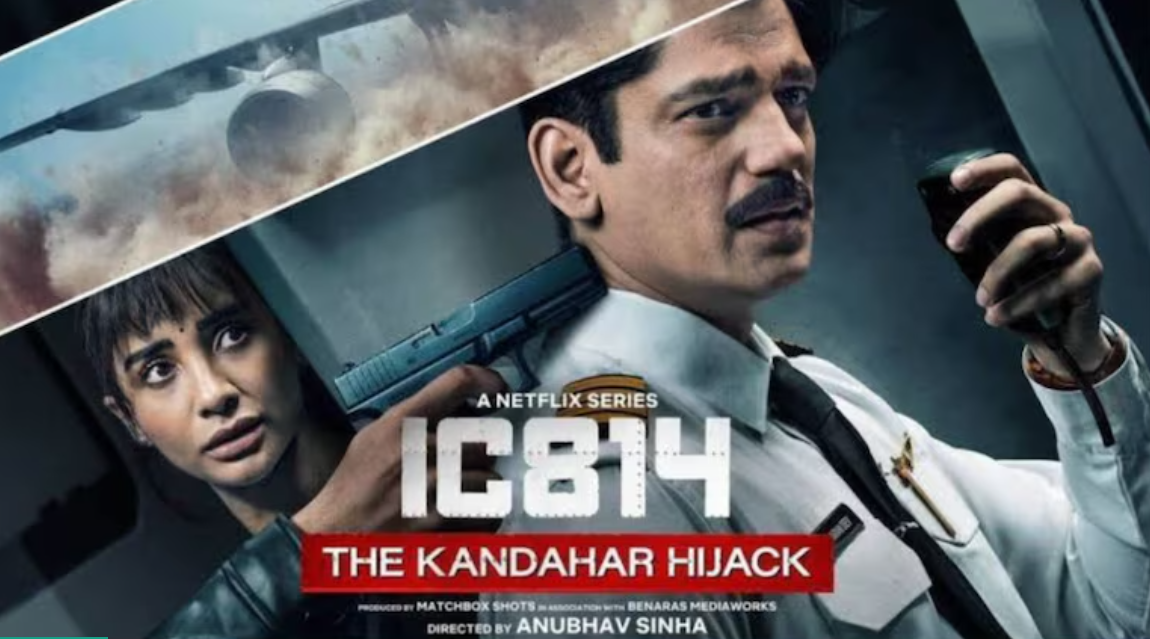The Kandahar Hijack: A Controversial Retelling of a Dark Chapter in Indian Aviation History
Introduction
“The Kandahar Hijack,” a new web series titled IC 814: The Kandahar Hijack Story, has sparked intense debate and captivated audiences with its retelling of the 1999 Indian Airlines Flight 814 hijacking. Directed by Anubhav Sinha and streaming on Netflix, the series revisits the traumatic events that unfolded over seven harrowing days, presenting a dramatized version of one of India’s most notorious hijackings. While the series offers gripping storytelling, it has also drawn criticism for its portrayal of the hijackers, especially regarding the use of Hindu names for some characters, raising questions about historical accuracy.
A Dramatic Retelling
“The Kandahar Hijack” recounts the true story of Flight IC 814, which was hijacked on December 24, 1999, while en route from Kathmandu to New Delhi. The hijackers, five militants from the Pakistan-based group Harkat-ul-Mujahideen, diverted the plane to Kandahar, Afghanistan, then under Taliban control. The series captures the tension and fear experienced by the passengers, as well as the intense negotiations between the Indian government and the hijackers, who demanded the release of 36 militants from Indian prisons.
Sinha’s series is based on the book Flight into Fear: The Captain’s Story by journalist Srinjoy Chowdhury and the flight’s captain, Devi Sharan. The ensemble cast, including Vijay Varma, Naseeruddin Shah, and Manoj Pahwa, delivers powerful performances that bring the harrowing incident to life, highlighting the psychological toll on both the hostages and the negotiators.
Controversy Over Names
One of the most controversial aspects of “The Kandahar Hijack” series is the use of the names “Bhola” and “Shankar” for two of the hijackers. Social media erupted with accusations that the series was altering facts by giving Hindu names to the perpetrators, which some viewed as an attempt to distort history. However, as clarified by multiple sources, these names were actually codenames used by the hijackers during the incident, not a fabrication by the filmmakers. The real names of the hijackers were Ibrahim Athar, Shahid Akhtar Sayed, Sunny Ahmed Qazi, Mistri Zahoor Ibrahim, and Shakir. Despite the controversy, the series stays largely true to the codenames that the hijackers used during the hijacking, reflecting the complex layers of their identity and operations.
Historical Accuracy and Creative License
While the series is rooted in real events, it takes creative liberties to enhance the drama and narrative flow. The challenge for any historical drama is balancing factual accuracy with storytelling, and “The Kandahar Hijack” is no exception. The depiction of the hijackers, the negotiations, and the intense pressure on Indian authorities are portrayed with dramatic flair, though some elements may be dramatized for effect.
The real hijacking saw the Indian government eventually agree to release three high-profile militants—Maulana Masood Azhar, Ahmed Omar Saeed Sheikh, and Mushtaq Ahmed Zargar—in exchange for the hostages’ release. This decision was met with widespread criticism, and the series delves into the moral and political dilemmas faced by the Indian leadership at the time.
Conclusion
“The Kandahar Hijack” offers a gripping, if controversial, retelling of a pivotal moment in Indian history. While the series has sparked debate over its portrayal of certain characters, it succeeds in bringing the harrowing reality of the IC 814 hijacking to a new generation of viewers. The combination of strong performances, a tense narrative, and historical significance makes it a compelling watch, despite the controversies surrounding its accuracy.
As with any dramatization of real events, viewers should approach “The Kandahar Hijack” with an understanding of the creative license involved and seek out additional sources to fully appreciate the complex history behind the story.





